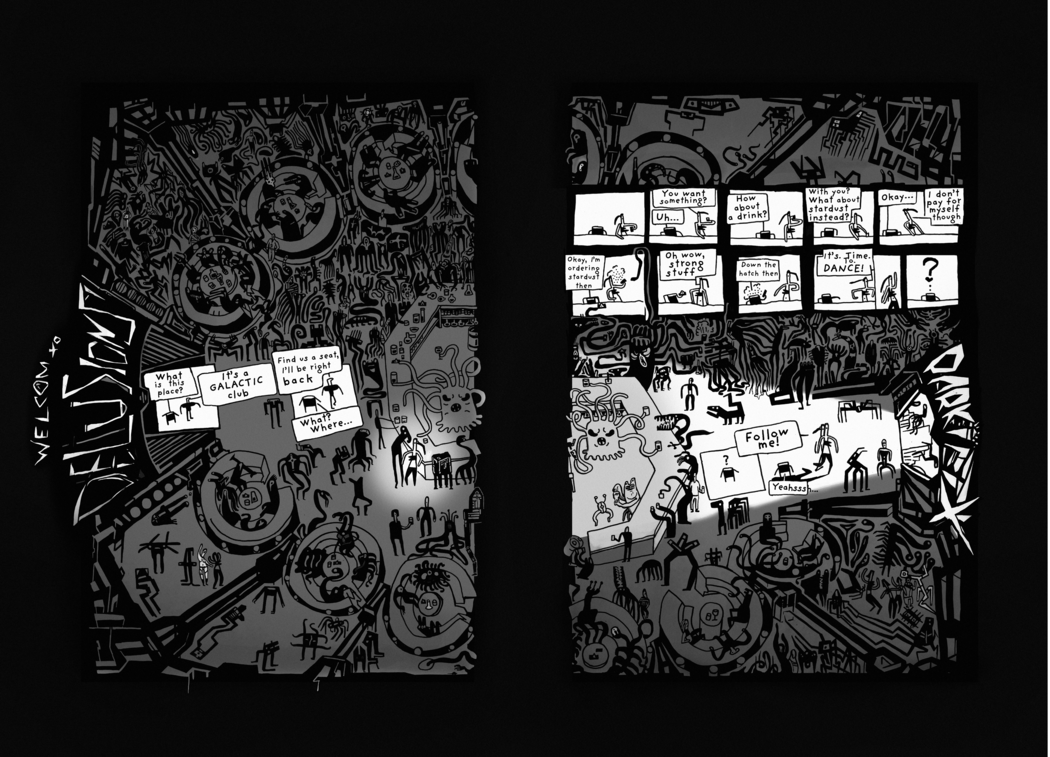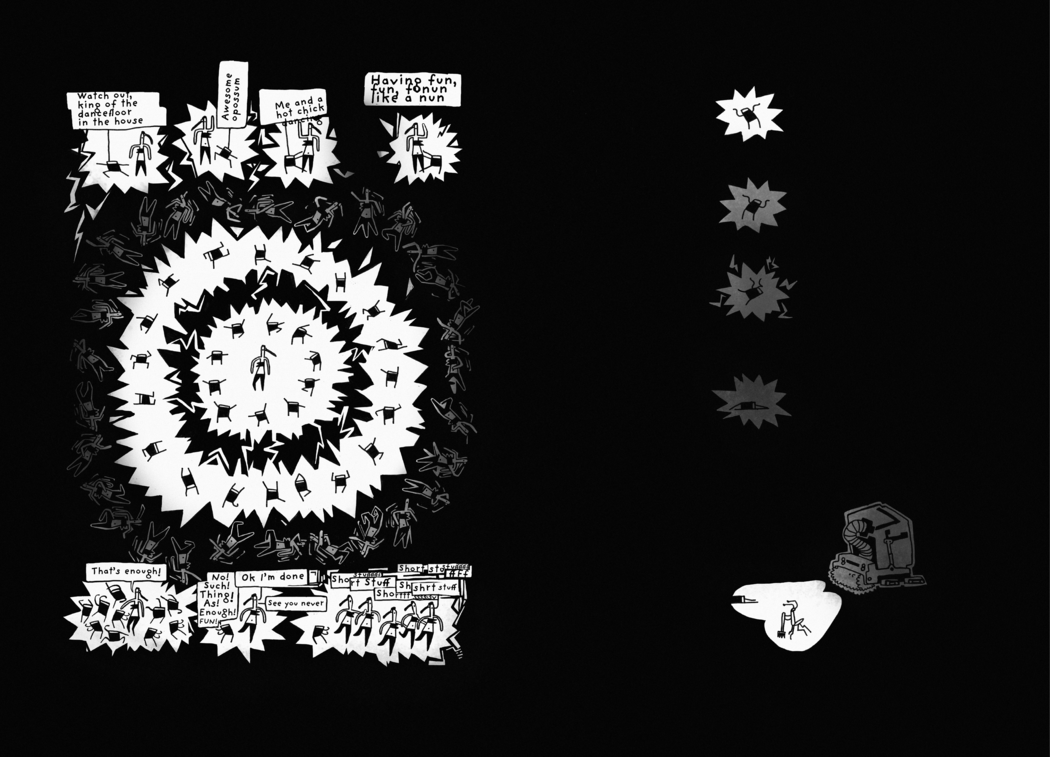Szymon Szelc
Year of birth: 1990.
Where do you live: Kraków, Poland.
Your education: Master of Fine Arts from the Academy of Fine Arts in Krakow.
Describe your art in three words: Ink, black & white.
Your discipline: Drawing.
Instagram
Could you describe the initial concept behind your graphic novel project? How did the idea come to you?
At the very beginning, the main impetus for working on this graphic novel was preparing for my master’s thesis. As part of the defense, I prepared the first chapter of this album. This was many years ago, and I’ve been developing the album in various directions depending on my mood and circumstances. Fragments of the album have appeared in different anthologies and zines. Aside from academic expectations, I’ve always been interested in themes related to the condition of organic humans in the contemporary world we live in. The science fiction setting provides an excellent context for contemplating where all of this is heading.
How does your experience working in computer games and animated films influence your approach to storytelling in comics?
I have certainly learned greater precision in depicting specific scenes or situations. In comics, games, and films, it’s crucial for the creator to be able to maintain focus on the work for a long time. Such projects aren’t created through a burst of inspiration; they require consistency, patience, and long-term commitment. Over time, I also learned to think more about the entire project rather than just a single sequence or even one frame. Creating works like these is a process that demands focus and perseverance to ensure the overall vision is achieved.
Your graphic novel explores existential and philosophical themes. What specific aspects of human existence do you find most compelling to portray?
The story subtly touches on several existential issues, from fundamental ones such as the condition of the individual in relation to the condition of society, the search for meaning in everyday routine, to the alienation of individuals, especially in growing urban environments. These themes are intertwined with the development of technology, urbanization, cultural diversity, and their impact. Economic potential in relation to the humanistic value of the individual is also explored.
The city in your graphic novel is inhabited by diverse species from across the cosmos. How do you use these characters to reflect real-world societal issues?
The UFOs serve as a way to lightly touch upon issues of migration, as well as the challenges and anxieties associated with cultural diversity and the integration of different groups within society. We also address topics such as social stratification, the dehumanization of alien newcomers, and problems arising from overpopulation. In the later parts of the comic, we gradually reach some of the underlying causes of these situations, including expansionism, the industrialization of every habitable corner of space, and the excessive exploitation of resources.
Cyberpunk is a central theme in your work. What aspects of the genre fascinate you, and how do you incorporate them into your visual storytelling?
I wouldn’t say that cyberpunk is a central theme in my work, but I certainly enjoy the genre and its aesthetics. The electrifying and formally as well as stylistically eclectic elements reveal a disturbing vision of humanity’s development, towards which one might get the impression we are inevitably heading.
The combination of humor and fear is a unique balance in your work. How do you navigate these contrasting emotions in your narrative?
It seems to me that in the world around us, especially in media messaging but also in interactions with other people, there are many situations so devoid of logic, reason, or goodwill that it’s easy to fall into a sense of uncertainty or even fear. This happens across the full spectrum of human activity—from going shopping, where one can feel overwhelmed by the number of people, the sheer range of available choices, or interacting with self-checkout machines, to global social unrest, which might suggest we are standing on the edge of a precipice, with another abyss waiting just beyond. So, the only way to cope with it all each day is to highlight the absurdity of these situations and laugh at them.
Having run a comic book publishing house and a comic art gallery, how did those experiences shape your current approach to creating comics?
To be honest, this experience exhausted me to the point where I lost the desire to work on my graphic stories for several years. Instead, I focused on creating video games and animated films.



Leave a Reply